
Rory Szwed (left) and Kent Rowan watched the festivities early Thursday morning at Gobbler’s Knob in Punxsutawney, Pennsylvania, while waiting for Punxsutawney Phil to make his prediction.
Barry Rigg/AP
hide title
switch subtitles
Barry Rigg/AP

Rory Szwed (left) and Kent Rowan watched the festivities early Thursday morning at Gobbler’s Knob in Punxsutawney, Pennsylvania, while waiting for Punxsutawney Phil to make his prediction.
Barry Rigg/AP
Thousands of early risers were either tuned in to the TV or armed to the teeth on Thursday morning to watch Punxsutawney Phil emerge from tree stumps and forecast the weather.
The groundhog — arguably the most famous member of his kind and best known of all the animal prophets in the country — did what he’s done for the past 137 years: in front of a crowd of top-hatted breeders. Look for signs of spring and a raving fan at Gobbler’s Knob in Pennsylvania.
Unfortunately, on this blustery winter morning, he couldn’t find it.
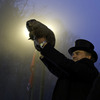
“I saw a shadow on my stage, so no matter how you measure it, it’s been six more weeks of winter weather,” an administrator read out of the reel he said Phil chose.
Tradition says North America will have six weeks of winter if Phil sees his shadow, and early spring if not. The stats don’t tell much: Phil has been accurate about 40 percent of the time over the past decade.
In addition, human meteorologists now have far more advanced methods of weather forecasting than they did when Phil began his career in 1887.
So why are we continuing our search for biological answers on February 2nd? 2. Year after year? (Arguably it’s almost like the 1993 comedy Groundhog Day…exactly.)
We can still learn a lot from Groundhog Day about our climate and culture, several experts told NPR.

Daniel Blumstein, a professor of ecology and evolutionary biology at UCLA, studies prairie dogs, a group of 15 species of large ground squirrels that includes marmots. His department always throws a Groundhog Day party, even in perennially sunny Los Angeles — but he says you don’t have to be a “groundhog lover” (as he describes himself) to get some from the day thing.
“I hope people have more appreciation for groundhogs and nature, I hope people chuckle at the idea that it’s the middle of winter, and we hope rodents will tell us what the future holds,” said Bloomstein.

Groundhog keeper AJ Derume stands in front of a crowd hugging Punxsutawney Phil, who saw his own shadow on Thursday, heralding late spring.
Michael Swenson/Getty Images
hide title
switch subtitles
Michael Swenson/Getty Images
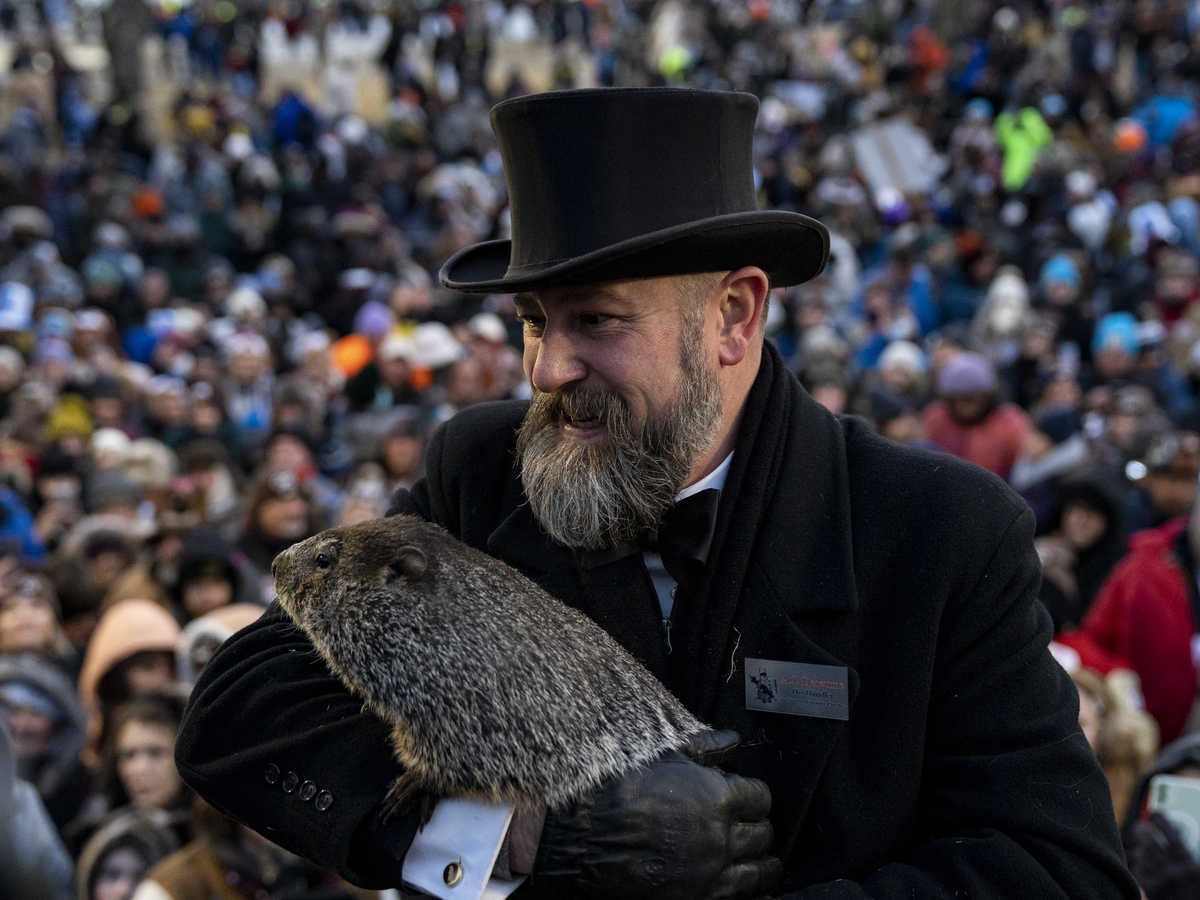
Groundhog keeper AJ Derume stands in front of a crowd hugging Punxsutawney Phil, who saw his own shadow on Thursday, heralding late spring.
Michael Swenson/Getty Images
Groundhog Day Has Its Origins in an Ancient Midwinter Ritual
How did America originally celebrate Groundhog Day?
It goes back to ancient traditions — first pagan, then Christian — marking the midpoint between the winter solstice and the vernal equinox, said Troy Harman, a history professor at Penn State and also of Gettysburg National Military Park. A ranger.
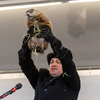
The Celtic tradition of Imbolc, which involves lighting candles in early February, dates back to the 10th century AD
The Christian Church later expanded this idea into Candlemas, commemorating the moment when the Virgin Mary went to the Temple in Jerusalem to purify Jesus 40 days after his birth and to present him as the firstborn to God.
On that holiday, the clergy would bless and distribute all the candles needed for winter—a day that, as the years went on, increasingly focused on predicting how long winter would last. As an English folk song puts it: “If Candlemas was fair and bright/Come, winter, fly again; if Candlemas brings clouds and rain/Go to winter, come no more.”
Germany has gone a step further by allowing animals — specifically hedgehogs — to be part of the lawsuit. According to German legend, if a hedgehog sees his own shadow, there will be a “second winter” or six more weeks of bad weather.
It was one of several traditions brought to America by German settlers in Pennsylvania, along with the Christmas tree and the Easter bunny, Harman said. Since hedgehogs are not native to the United States, they switched to woodhogs (which are plentiful in Pennsylvania).
“The first celebrations that we know of were in the 1880s,” Harman said. “But the idea of watching animals and whether they could see shadows in hibernation had been going on until then, and it just didn’t become a public festival until the late 1800s.”

The “Punxsutawney Groundhog Club” was founded in 1886 by a group of groundhog hunters, one of whom was the editor of the town’s newspaper, and quickly published a bulletin about the local weather-forecasting groundhog (although Phil did not know of him until 1961 name). The first Gobbler’s Knob ceremony took place the following year, and the rest is history.
Today’s Groundhog Day is the same as it started — if old-fashioned costumes and scrolls are any indication — just with far more attendees, the club said. That’s thanks in large part to the popularity of the film of the same name and the ability to livestream the celebration.
And more furry forecasters. Many parts of the United States and Canada now have their own beloved animal seers, and some of Phil’s better-known contemporaries include New York’s “Staten Island Chuck” (aka Charles G. Hogg) and Ontario’s “Whetton Willie”.
“Anywhere with groundhogs these days wants to get some [cred] To that,” Blumstein said.
It’s not just groundhogs involved. Case in point: Pisgah Pete, a white squirrel in North Carolina, Scramble the Duck in Connecticut, and a beaver at the Oregon Zoo named “Stumpton Fil.”
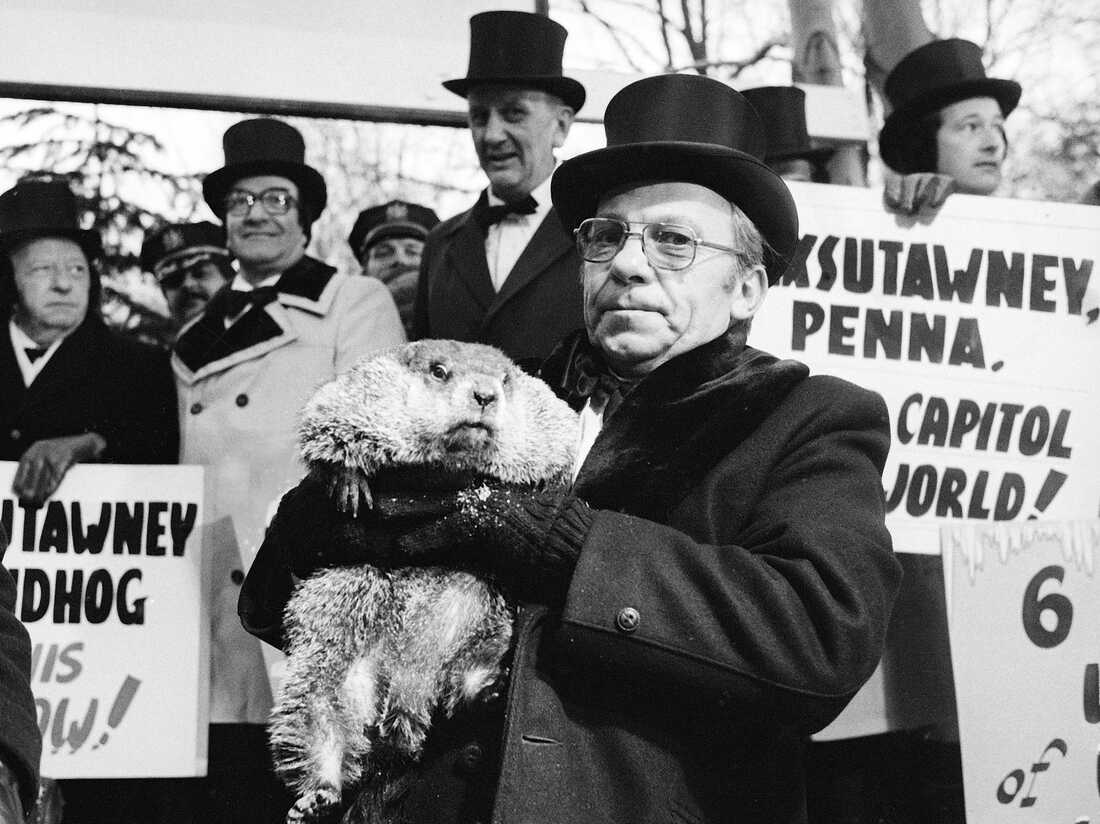
Jim Means hugs a sleepy Punxsutawney Phil at dawn on Feb. 17. 2. In 1980, the “Inner Circle” of the groundhog is still worn today.
Lucas/AP
hide title
switch subtitles
Lucas/AP

Jim Means hugs a sleepy Punxsutawney Phil at dawn on Feb. 17. 2. In 1980, the “Inner Circle” of the groundhog is still worn today.
Lucas/AP
Animals can teach us something about climate
According to Bloomstein, the Candlemas legend has some scientific basis.
He said the thinking at the time was that if there was a high pressure system in early February, conditions might not change and the weather would likely remain cold, while a low pressure system would suggest that the weather could improve in the future. Plus, if the weather is clear, groundhogs are theoretically large enough to stand up and cast shadows.
But that alone doesn’t make them reliable predictors.

“I don’t know if it’s possible to predict whether Groundhog Day will be sunny or whether spring will come early or late,” Blumstein said, adding that Phil’s prediction involved “his whispers to people in skinny hats, in front of drunken crowds , so you can’t really trust that.”
Still, he said humans can learn a lot from the behavior of the groundhog. He manages a long-term project, which is about to enter its 62nd year, studying yellow-bellied prairie dogs in Colorado as a window into lifespan and the animals’ flexibility to respond to a warming climate.

“Maybe it’s a good thing for guinea pigs because you have a longer growing season, but you’re active every day and you’re also at some risk of predation,” he explained. “What we’ve found is that there’s a sweet spot where you should be active. So there might be an evolutionary response to that as well, and what we’re really looking at is the evolutionary response to change over time and that kind of intragenerational plasticity, flexibility, if you If you want.”
As part of the study, Blumstein spent time skiing and waiting in the snow for yellow-bellied prairie dogs to emerge from hibernation.
So he was able to confirm that while Groundhog Day is tied to Candlemas, it also coincides with the time of year when groundhogs start appearing in the northeastern United States. The male usually comes out first and then starts looking for a female to mate with.
“Groundhog Day is really a holiday about sex,” he added.
All animals, not just forecasters, deserve respect, Blumstein said. While some consider groundhogs a nuisance because they love to eat garden produce, he believes living with wild animals in cities and suburbs is a good thing because it brings people closer to nature.
“So I see an ability that if you’re lucky enough to have a groundhog in your backyard, you can pay attention to it, enjoy it, learn from it, and maybe give up some tomatoes or apples.”
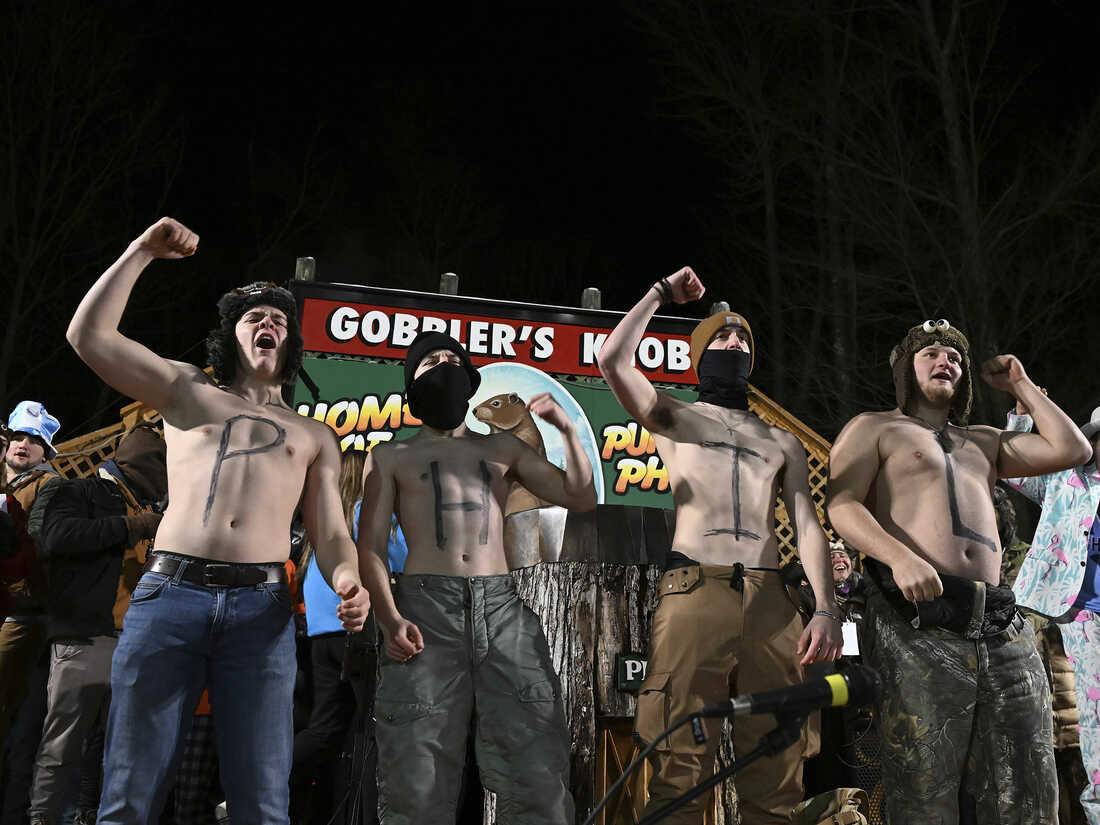
Viewers entertained the crowd Thursday morning while they waited for Punxsutawney Phil.
Barry Rigg/AP
hide title
switch subtitles
Barry Rigg/AP
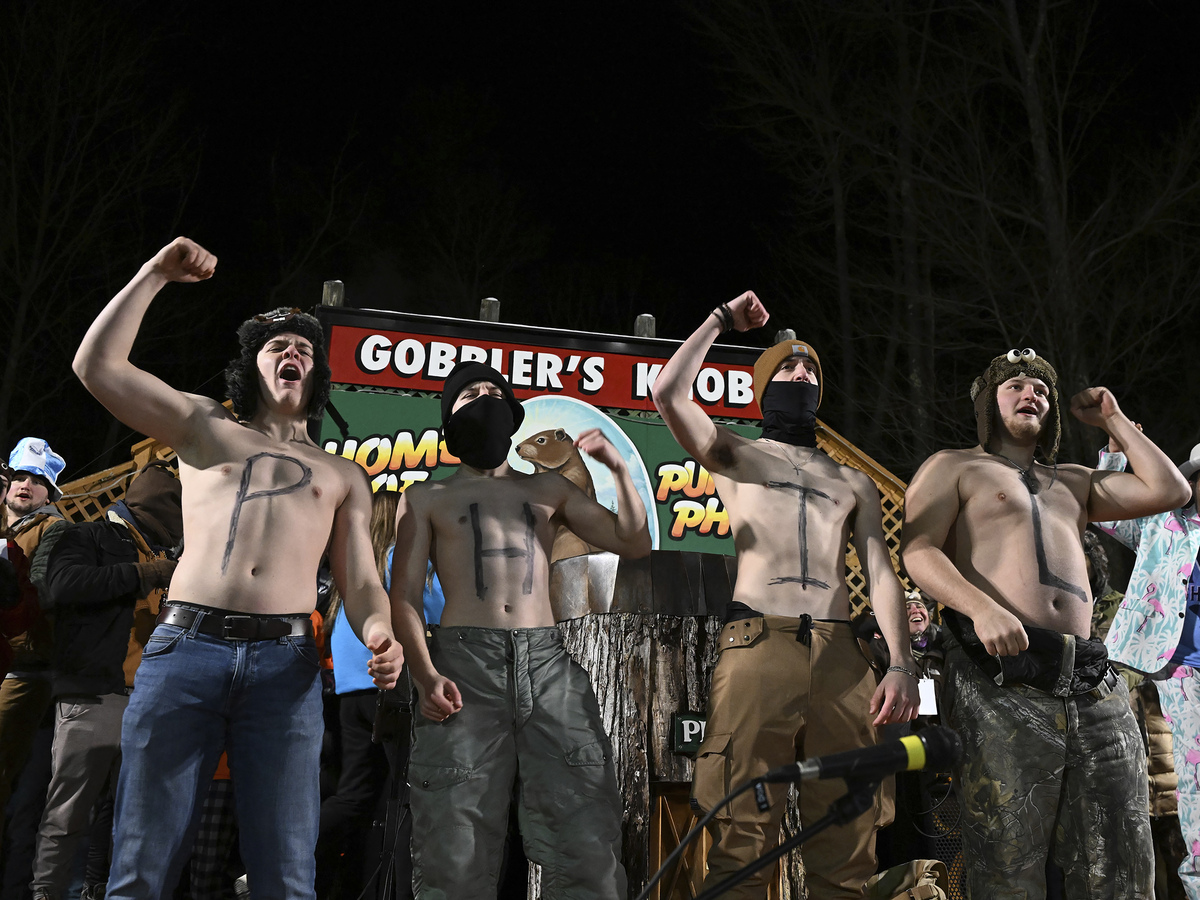
Viewers entertained the crowd Thursday morning while they waited for Punxsutawney Phil.
Barry Rigg/AP
Technology has improved, but people still expect Phil
As many as 30,000 people flocked to Punxsutawney for the multi-day Groundhog Day celebrations, which the state said was a huge tourism boost for the town of fewer than 6,000 people.
The ceremony itself — which returned to the stage last year after a COVID-19 hiatus — featured dancers, music, speakers and visitors from around the world.

“Having so many peoples coming together in one place to commemorate something from the medieval past and pre-modern times, and bringing music, food and culture – it’s a truly inspiring event,” Harman said.
He has a theory as to why Groundhog Day became so popular in America and remains so
“Throughout history, whenever science has been really emphasized, its intuitive, instinctive, emotional, imaginative counterpart — the right side of our brain — has receded a little bit,” Harman said, explaining that Groundhog Day Succeeded around the time of the Industrial Revolution.
These massive social and technological changes, he said, fueled a desire to return to imagined simpler times, in the form of literary Romanticism and Gothic Revival architecture, among others.

Punxsutawney Phil’s handlers, known as the “Inner Circle,” continue to wear dark tuxedos, long ponytails and top hats even today, he noted. Meanwhile, technological advances have made us less attuned to the changing seasons: People used to look up to the stars and sun to determine the time of day or year; now they look down at their phone screens.
It’s important to stick to a culture, Harman said, but it’s also important to embrace a new culture. Over time, he thinks, there will be “some happy places” — which may already be the case for Ponsuttoni.
“I strongly suspect that people who go to Gobbler’s Knob are fully aware of the power of science, but at the same time want to stick to tradition and a deeper vibe,” he said. “Instinct, intuition, and imagination that everyone has must be balanced with logic and rationality.”